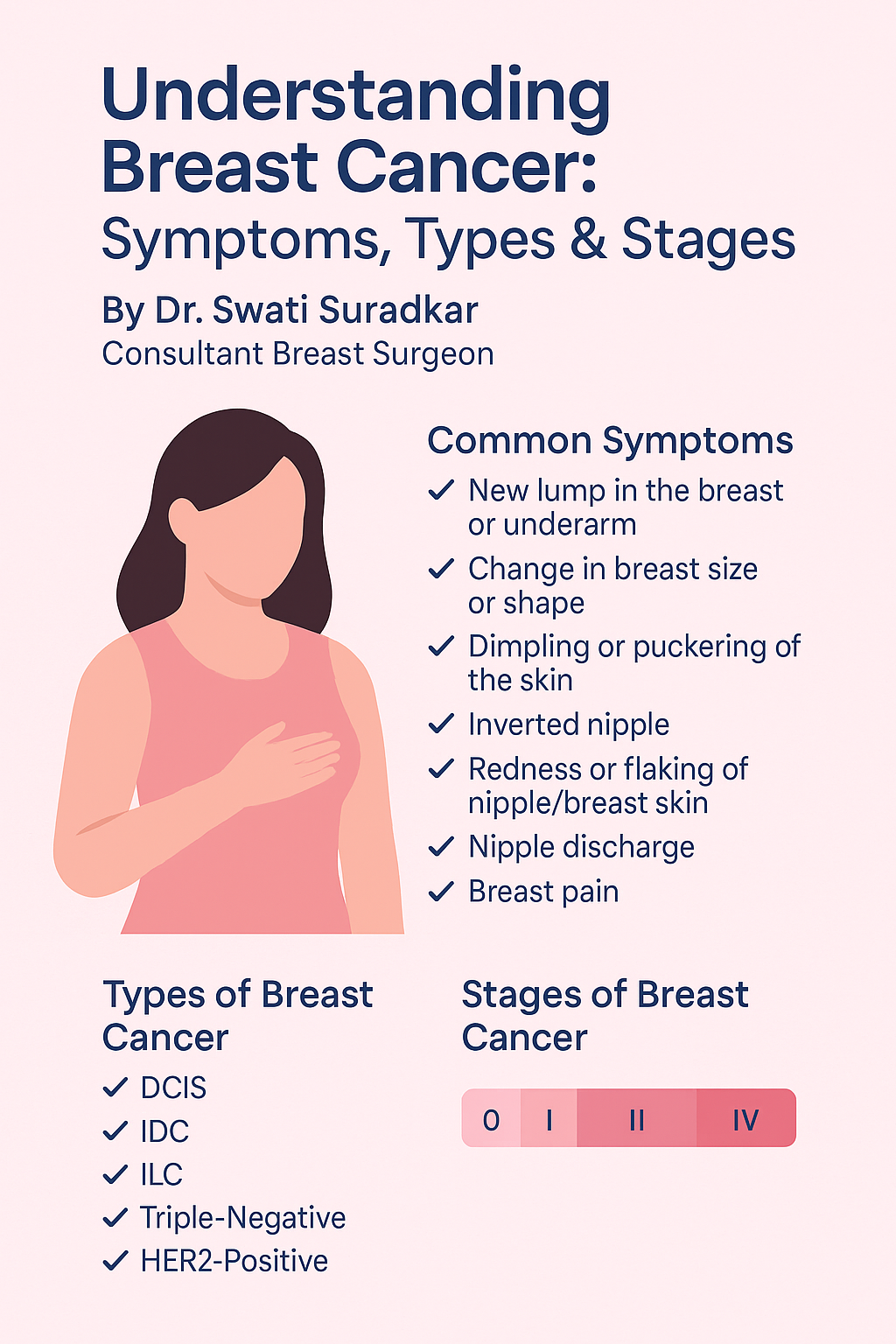Understanding Breast Cancer: Symptoms, Types & Stages By Dr. Swati Suradkar – Consultant Breast Surgeon
🩺 Understanding Breast Cancer: Symptoms, Types & Stages
By Dr. Swati Suradkar – Consultant Breast Surgeon
Intro
Breast cancer is one of the most common cancers among women — but with early detection and the right treatment, survival rates are high. This article aims to help you understand the symptoms, types, and stages of breast cancer in simple, clear terms.
🔍 What Is Breast Cancer?
Breast cancer develops when cells in the breast begin to grow abnormally and uncontrollably. These cells can form lumps, invade surrounding tissues, and potentially spread (metastasize) to other parts of the body.
⚠️ Common Symptoms
Don’t ignore these signs:
New lump in the breast or underarm
Change in breast size or shape
Skin dimpling or puckering
Nipple retraction or inversion
Redness or flaky skin on the nipple
Nipple discharge (especially if bloody)
Pain in any area of the breast
Tip: Not all lumps are cancer. But all lumps should be evaluated.
🧬 Types of Breast Cancer
DCIS (Stage 0): Non-invasive, early-stage
IDC (Invasive Ductal Carcinoma): Most common form
ILC (Invasive Lobular Carcinoma): Starts in milk-producing glands
Triple-Negative: More aggressive, requires targeted therapy
HER2-Positive: Fast-growing but treatable with modern therapies
🧭 Understanding the Stages
Stage Description
0 Non-invasive (DCIS)
I Small tumor, minimal spread
II Larger tumor, limited lymph node involvement
III Extensive lymph node involvement or local spread
IV Metastatic cancer (spread to distant organs)
🩷 Final Thoughts from Dr. Swati
“Breast cancer can be treated most effectively when detected early. Be breast-aware, perform self-examinations regularly, and don’t hesitate to consult a specialist if you notice any changes.”
📞 Call to Action
✅ Concerned about a lump or breast changes?
📅 Book a consultation with today.
📍 Available at
Wellness Clinic above alpha diagnostic center kharadi bypass, nagar road, Pune
Ruby Hall Clinic, Pune Station, Pune
Manipal Hospital Kharadi, Pune
📞 Call: +91-7263034880
💻 Visit: www.wellnessclinicpune.com


